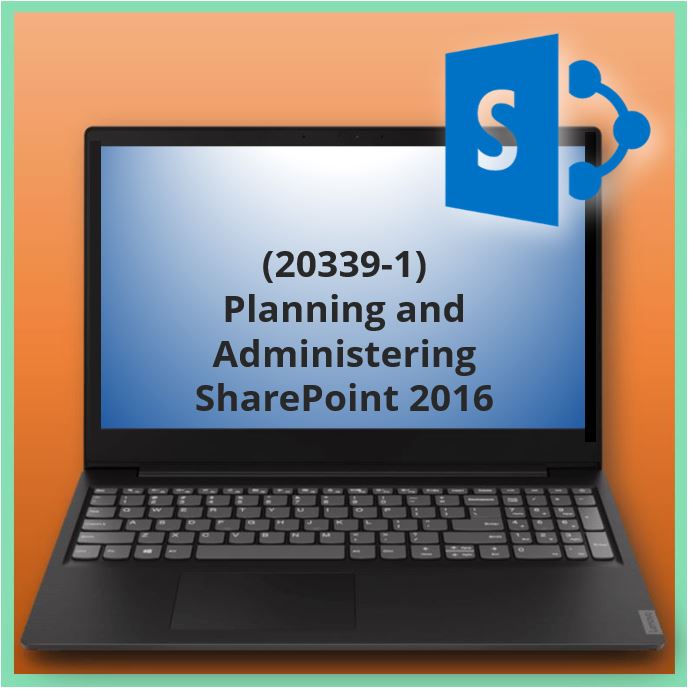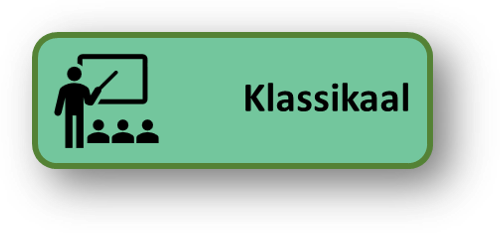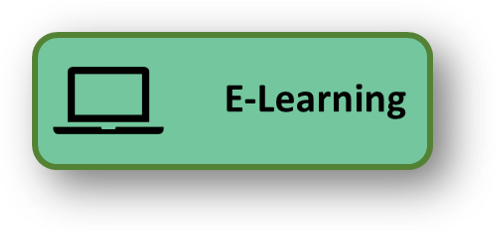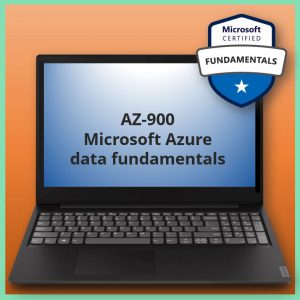Aangeboden leervormen
Advanced Technologies of SharePoint 2016 (20339-2)
About this course
This course will teach you how to plan, configure, and manage the advanced features in a SharePoint 2016 environment. The special areas of focus for this course include implementing high availability, disaster recovery, service application architecture, and Microsoft Business Connectivity Services. This course also focuses on social computing features, productivity, and collaboration platforms and features. Students also will learn about business intelligence solutions, Enterprise Content Management, web content management infrastructure, solutions, and apps. This course also covers how to develop and implement a governance plan, and how to perform an upgrade or a migration to SharePoint 2016.
This is the second in a sequence of two courses for IT Professionals and is aligned with the SharePoint 2016 IT Pro certification.
At course completion
After completing this course, students will be able to:
• Describe the core SharePoint 2016 architecture and its new and improved features.
• Describe the key hybrid features in SharePoint 2016.
• Plan and design a SharePoint 2016 environment to meet requirements for high availability and disaster recovery.
• Plan and implement Business Connectivity Services and Secure Store Service.
• Configure and manage productivity services for a SharePoint 2016 deployment.
• Manage solutions in a SharePoint 2016 deployment.
• Plan and configure social computing features.
• Plan and configure web content management for an Internet-facing environment.
• Plan and configure Enterprise Content Management in a SharePoint 2016 deployment.
• Plan and configure business intelligence solutions.
• Plan and configure work management, productivity, and collaboration platforms and features.
• Perform an upgrade or migration to SharePoint 2016.

Voor wie
The course is targeted at experienced IT Professionals who are interested in learning how to install, configure, deploy, and manage SharePoint 2016 installations either in a data center or in the cloud.
Students typically should have more than four years of hands-on experience* planning and maintaining SharePoint Server and other core technologies upon which SharePoint depends, including Windows Server 2012 R2 or later, Internet Information Services (IIS), Microsoft SQL Server 2014 R2 or later, Active Directory Domain Services (AD DS), and networking infrastructure services.
Students should have completed Course 20339-1A: Planning and Administering Microsoft SharePoint 2016, or have gained equivalent knowledge and experience before taking this course.
The minimally qualified candidate typically:
• Has a working knowledge of, and preferably hands-on experience, with Microsoft SharePoint Online.
• Has broad familiarity with SharePoint Server workloads.
• Has experience with business continuity management, including data backup, restoration, and high availability.
• Has experience with authentication and security technologies.
• Has experience with Windows PowerShell.
* The hands-on experience or job experience should be from a solutions-based role where the candidate has worked on multiple solutions in the SharePoint Server space that includes document management, content management, and search.
Programma
Voor het programma van e-learning >>> KLIK HIER <<<
Module 1: Introduction to SharePoint 2016
This module describes the core architectural components of a SharePoint Server environment, and identifies the key new features and changes in SharePoint 2016.
Lessons
• The core SharePoint 2016 architecture
• New features in SharePoint 2016
Lab : Reviewing core Microsoft SharePoint concepts
• Configuring SharePoint 2016 farms by using Windows PowerShell
• Provisioning service applications by using Windows PowerShel
After completing this module, students will be able to:
• Describe the core architectural components of a SharePoint Server environment.
• Identify the key new features and changes in SharePoint 2016.
Module 2: Introduction to hybrid scenarios for SharePoint 2016
This module describes the key hybrid features in SharePoint 2016, and the various hybrid options available in SharePoint 2016. This module helps you understand how to configure a solution that uses an outbound search topology.
Lessons
• Exploring the hybrid features in SharePoint 2016
• Hybrid architectures in SharePoint 2016
• Configuring a one-way hybrid search, and configuring OneDrive for Business
Lab : Configuring a Microsoft Office 365 tenant
• Configuring an Office 365 tenant
Lab : Configuring one-way hybrid search and configuring OneDrive for Business
• Configuring an outbound search topology
After completing this module, students will be able to:
• Describe the key hybrid features in SharePoint 2016.
• Describe the various hybrid options available in SharePoint 2016.
• Configure a solution that uses an outbound search topology.
Module 3: Planning and designing for business continuity management
This module explains how to select an appropriate database server configuration to meet availability requirements. It also describes how to design a physical architecture and infrastructure to meet high-availability requirements. Finally, this module explains how to develop and implement a backup and restore strategy.
Lessons
• Designing database topologies for high availability and disaster recovery
• Designing a SharePoint 2016 infrastructure for high availability
• Planning for disaster recovery
Lab : Planning for high availability
• Planning a Microsoft SQL Server topology & designing SharePoint infrastructure for high availability
• Developing a high-availability physical architecture design diagram
Lab : Designing a backup and restore plan, and performing a backup and a restore
• Creating a backup and restore plan
• Testing the backup and recovery process
After completing this module, students will be able to:
• Select an appropriate database server configuration to meet availability requirements.
• Design a physical architecture and infrastructure to meet high-availability requirements.
• Develop and implement a backup and restore strategy.
Module 4: Planning and implementing Business Connectivity Services and Secure Store Service
This module explains how to configure Business Connectivity Services (BCS), and describes how to configure and manage the Secure Store Service application. It also explains how you can configure and manage BCS models.
Lessons
• Configuring BCS
• Configuring the Secure Store Service
• Managing BCS models
Lab : Configuring Business Connectivity Services and the Secure Store Service
• Configuring the Business Data Connectivity service application
• Configuring the Secure Store Service
Lab : Managing Business Data Connectivity models
• Importing and configuring Business Data Connectivity (BDC) models
• Configuring a Secure Store Service target application
• Creating profile pages for BDC models
After completing this module, students will be able to:
• Configure Business Connectivity Services.
• Configure and manage the Secure Store Service application.
• Configure and manage BCS models.
Module 5: Configuring productivity services for a SharePoint 2016 deployment
This module describes SharePoint apps and the supporting SharePoint infrastructure. This module also explains how to provision and configure SharePoint apps and app catalogs, and how to manage app usage within a SharePoint 2016 deployment. Additionally, this module describes how to provision Microsoft Access Services, Visio Services, Word Automation Services, PowerPoint Automation Services, and SharePoint Translation Services.
Lessons
• Understanding the SharePoint app architecture
• Provisioning and configuring apps and app catalogs
• Managing apps
• Provisioning productivity services
Lab : Configuring and managing SharePoint apps and app catalogs
• Configuring a SharePoint farm to support apps
• Creating and configuring a corporate catalog
• Deploying and monitoring apps
After completing this module, students will be able to:
• Describe SharePoint apps and the supporting SharePoint infrastructure.
• Provision and configure SharePoint apps and app catalogs
• Manage how apps are used within a SharePoint 2016 deployment.
• Describe how to provision Microsoft Access Services, Visio Services, Word Automation Services, PowerPoint Conversion Services, and SharePoint Translation Services.
Module 6: Managing solutions in a SharePoint 2016 deployment
This module describes the purpose and structure of SharePoint features and solutions. In addition, it explains how to manage farm solutions in a SharePoint 2016 deployment, and how to manage sandbox solutions in a SharePoint 2016 deployment.
Lessons
• Understanding the SharePoint solution architecture
• Managing farm solutions
• Managing sandboxed solutions
Lab : Managing SharePoint 2016 solutions
• Configuring sandboxed solution management at the farm level
• Configuring sandboxed solution management at the site collection level
• Deploying farm solutions
After completing this module, students will be able to:
• Describe the purpose and structure of SharePoint features and solutions.
• Manage farm solutions in a SharePoint 2016 deployment.
• Manage sandboxed solutions in a SharePoint 2016 deployment.
Module 7: Connecting people
This module explains how to implement user profiles and configure synchronization for a SharePoint 2016 deployment, and how to plan and configure My Site and social features. This module also describes how to configure community sites.
Lessons
• Planning user profiles
• Enabling My Sites and social features
• Building communities
Lab : Configuring profile synchronization and My Sites
• Configuring user profile synchronization by using Microsoft Identity Manager 2016
• Configuring user profile policies
• Configuring My Sites
Lab : Configuring community sites
• Creating a community site infrastructure
• Configuring community site participation
After completing this module, students will be able to:
• Implement user profiles and configure synchronization for a SharePoint 2016 deployment.
• Plan and configure My Sites and social features.
• Configure community sites
Module 8: Planning and configuring web content management
This module explains how to plan and configure a web content management infrastructure to meet business requirements. This module also describes how to configure managed navigation and product catalog sites, and how to configure support for multilingual sites. Additionally, it explains and how to plan and manage design and customization for publishing sites, and how to plan and configure support for mobile users.
Lessons
• Planning and implementing a web content management infrastructure
• Configuring managed navigation and catalog sites
• Supporting multiple languages and locales
• Planning and managing design and customization
• Supporting mobile users
Lab : Configuring managed navigation and catalog sites
• Configuring a catalog site
• Configuring a publishing site to use catalog content
Lab : Configuring device channels
• Configuring device channels
After completing this module, students will be able to:
• Plan and configure a web content management infrastructure to meet business requirements.
• Configure managed navigation and product catalog sites.
• Configure support for multilingual sites.
• Plan and manage design and customization for publishing sites.
• Plan and configure support for mobile users.
Module 9: Planning and configuring Enterprise Content Management
This module explains how to plan for management of content and documents, and how to plan for and configure eDiscovery. Additionally, it describes how to plan for records management and compliance.
Lessons
• Planning content management
• Planning and configuring eDiscovery
• Planning records management
Lab : Configuring eDiscovery in SharePoint 2016
• Creating an eDiscovery center
• Creating and managing eDiscovery cases
• Configuring in-place preservation
Lab : Configuring records management in SharePoint 2016
• Creating site-based retention policies
After completing this module, students will be able to:
• Plan how to manage content and documents.
• Plan and configure eDiscovery.
• Plan records management and compliance
Module 10: Planning and configuring business intelligence solutions
This module explains how to plan a business intelligence (BI) architecture for a SharePoint 2016 deployment, and how to deploy and manage BI services.
Lessons
• Planning a business intelligence architecture
• Deploying and managing business intelligence services
Lab : Configuring PowerPivot for SharePoint 2016
• Installing and configuring the PowerPivot add-in
• Verifying the PowerPivot for SharePoint functionality
After completing this module, students will be able to:
• Plan a BI architecture for a SharePoint 2016 deployment.
• Deploy and manage BI services.
Module 11: Planning and configuring work management and productivity
This module explains how to configure connections to enterprise server platforms, and how to plan and configure productivity and collaboration features. This module also explains how to plan and configure composite solutions in SharePoint 2016.
Lessons
• Aggregating tasks with the Work Management Service
• Planning and configuring collaboration features
• Planning and configuring composites
Lab : Configuring project sites
• Creating project sites
• Configuring project sites
• Engaging project teams
• Configuring Project Server integration
Lab : Configuring a workflow
• Configure Microsoft Azure Workflow and Microsoft SharePoint Workflow Services
• Creating and testing a workflow
After completing this module, students will be able to:
• Configure connections to enterprise server platforms.
• Plan and configure productivity and collaboration features.
• Plan and configure composite solutions in SharePoint 2016.
Module 12: Upgrading and migrating to SharePoint 2016
This module explains how to plan an upgrade or migration to SharePoint 2016. In addition, it explains how to manage site collections are how to upgrade them to SharePoint 2016. Finally, the module describes how to upgrade advanced content from SharePoint Server 2013 to SharePoint 2016.
Lessons
• Preparing for an upgrade or migration
• Planning an upgrade process
• Planning and managing a site collection upgrade
• Upgrading for advanced scenarios
Lab : Performing a content database migration and upgrade from Microsoft SharePoint Server 2013
• Migrating a content database from SharePoint Server 2013 to SharePoint 2016
Lab : Managing site collection upgrades
• Preparing site collections for upgrade
• Upgrading site collections
• Reviewing farm-level site collection upgrade settings
• Migrating a content database from SharePoint Server 2013 to SharePoint 2016
After completing this module, students will be able to:
• Prepare for an upgrade or migration to SharePoint 2016.
• Plan an upgrade or migration process.
• Manage how site collections are upgraded to SharePoint 2016.
• Upgrade advanced content from SharePoint Server 2013 to SharePoint 2016.
Voorkennis
An ideal candidate for this course must have at least one year experience with deploying and administering multiple SharePoint Server 2013 farms across a large enterprise. The candidate should have completed Course 20339-1A: Planning and Administering Microsoft SharePoint 2016, or should demonstrate equivalent skills
Before attending this course, students must demonstrate the following skills:
• At least a one-year experience of mapping business requirements to both logical and physical technical designs.
• Working knowledge of network design, including network security.
• Software management experience in a Windows Server 2012 R2 enterprise server or Windows Server 2016 environment.
• Deploying and managing applications natively, virtually, and in the cloud.
• Administering IIS.
• Configuring AD DS for use in authentication and authorization, and as a user store.
• Managing an application remotely by using Windows PowerShell 2.0 or later.
• Connecting applications to SQL Server.
• Implementing claims-based security.
Examen
This course prepares for exam M70-339 Managing Microsoft SharePoint Server 2016 (in development) together with the course 20339-1 Planning and Administering SharePoint Server 2016
Duur training
Klassikaal: 4 dagen
Blended Learning: 3 dagen
Open Leercentrum: 5 dagen
E-Learning: 90 dagen











